Factory-wide visualization streamlines utility management in the “new norm”
Mitsubishi Electric’s Nagoya Works, one of the company’s main factories developing and manufacturing industrial automation products and systems, introduced a smart visualisation solution to monitor utility data throughout the entire factory.
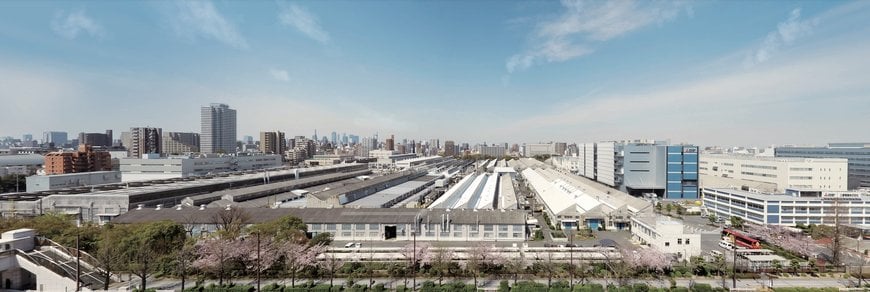
Mitsubishi Electric’s Nagoya Works introduced a smart visualisation solution to display and monitor utility data throughout the entire factory.
Key Points
- Operational data from utilities, previously monitored through separate systems, was brought together to provide one-stop access for the entire factory.
- The GENESIS64™ system visualizes real-time operational data from electrical substations, boilers, etc.
- Remote access to the GENESIS64™ software enabled infrastructure management operators to work remotely.
Nagoya Works, one of the main factories in Mitsubishi Electric’s factory automation business, is home to over thirty buildings dedicated to production, administration and services, supporting the many teams of diverse employees who work at this vast facility. Within the premises, significant infrastructure has been built to supply electricity, air, and steam throughout the factory.
For the stable supply of such resources, which are indispensable to production, it is crucial to regularly check the operational status of the utility infrastructure and the load factors of the equipment. The Environment Promotion Section of Nagoya Works’ Manufacturing Systems Division is responsible for taking care of the infrastructure equipment, meaning they not only perform regular maintenance and repairs on equipment, but also monitor the operational status and undertake precautionary measures that will prevent any major problems from occurring. Without such measures any lack of resources may, for example, lead to downtimes in production, or cause overloads that lead to machine breakdowns.
Previously, the members of the environment team had to patrol the buildings and facilities, collecting operational data from individual monitoring systems in power substations and steam boilers. This was quite time consuming since they were all separate systems. Even after they collected the data, they had to add it to a system diagram to analyze the load conditions on the wiring and piping that connects the equipment.
This took more than just man hours. Ryohei Kitada from the Environment Promotion Section explained the issues around this task, “We needed to update the system diagram every time the system configuration changed, and what’s more, we had to be able to understand the status from the data in the diagrams, which depended highly on the skills of each individual. When installing new equipment, we would also have to do a cross-sectional verification to check if the capacity of the current infrastructure would be enough. Therefore, we needed to find a way to bring together the operational data from all the utility equipment in the factory to achieve one-stop access.”
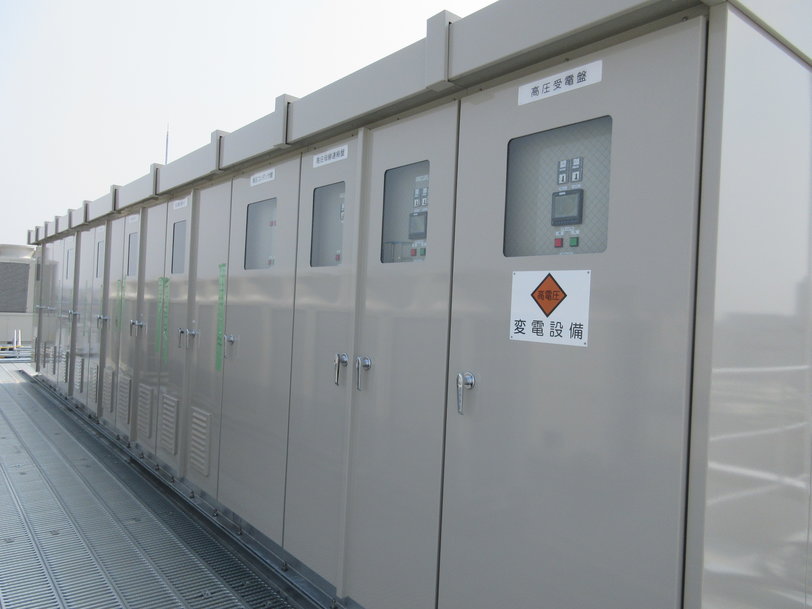
Since numerous high-voltage transformers are scattered throughout the Nagoya Works facility, an integrated monitoring system was required to pull together all the data.
Operational data from equipment throughout the plant is tracked and visualized every 10 seconds
Most of the energy monitoring systems for the buildings were already controlled by programmable logic controllers (PLCs), which were connected to the in-house LAN network. This meant that all the data could be collected by an OPC UA* server, and then visualized by the GENESIS64™ software.
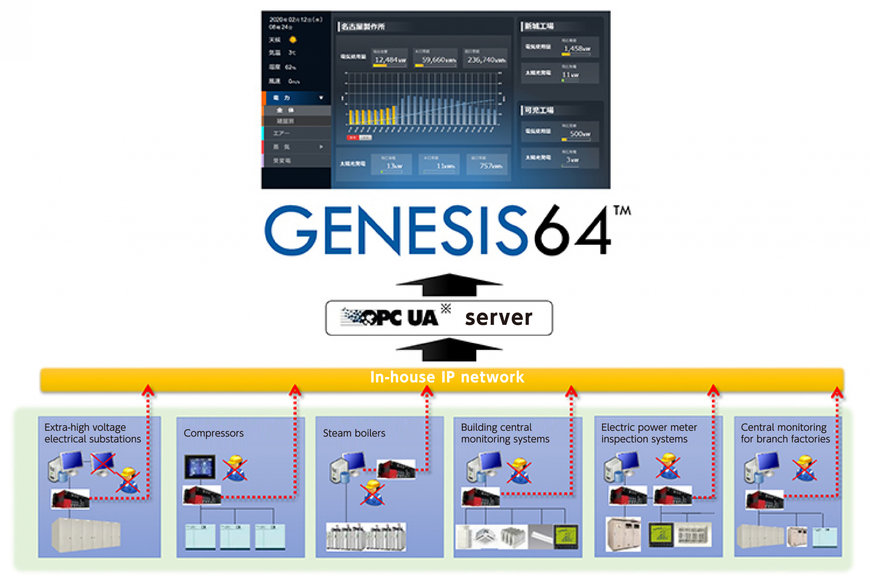
GENESIS64™ monitors the energy infrastructure throughout Nagoya Works. The monitoring systems for every building and piece of equipment, including those at two branch factories, were connected to the in-house LAN, and the GENESIS64™ software then visualizes the data collected.
* OPC UA is a trademark of the OPC Foundation.
Another benefit from using the smart visualization solution GENESIS64™ was that they were able to check the real-time operational data of infrastructure equipment, making it possible to react quickly in the case of equipment malfunctions. By being able to understand the equipment status without having to patrol throughout the factory, it helped reduce downtime and improve productivity.
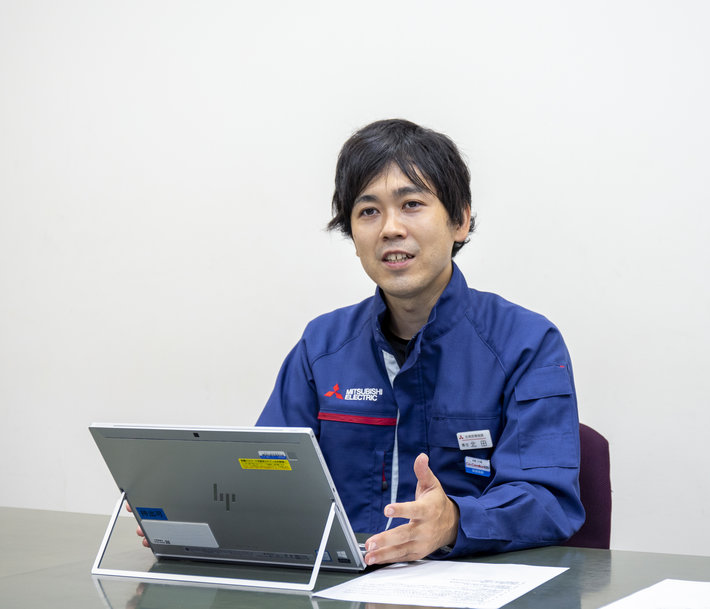
Ryohei Kitada of the Environment Promotion Section, Nagoya Works, Mitsubishi Electric Corporation.
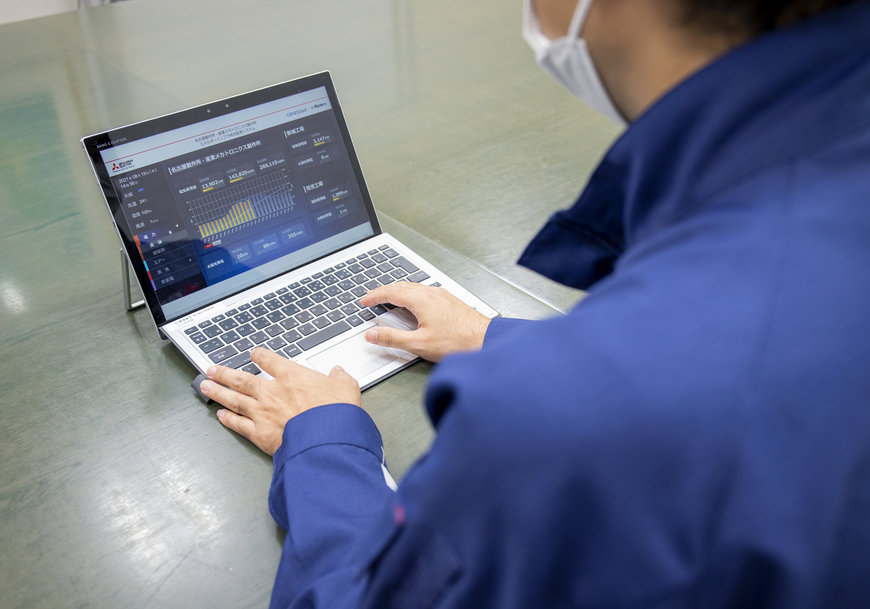
Since GENESIS64™ works on a web browser, it can be accessed from a PC, tablet, or smartphone.
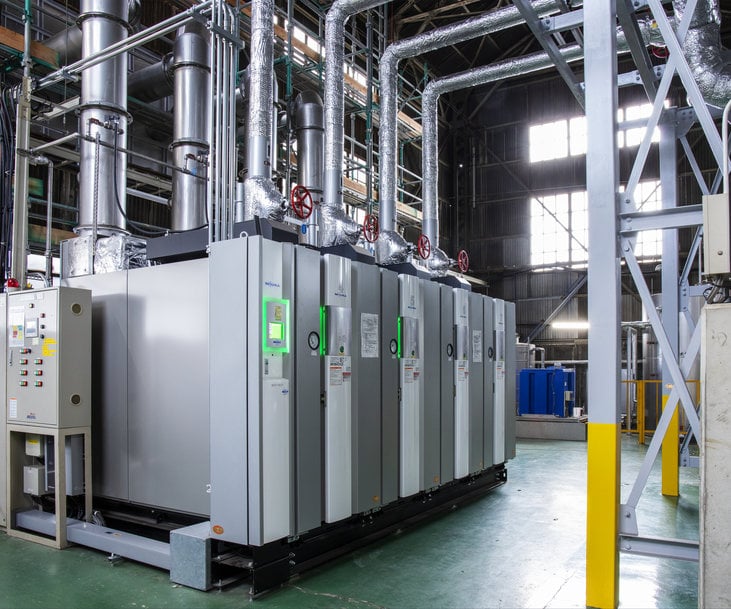
Agile shift to remote working
It was in 2020 that Nagoya Works started using GENESIS64™ for monitoring the energy infrastructure within its factory. Implementing the project unexpectedly provided an additional benefit. With people being encouraged to work from home due to the COVID-19 pandemic, Ryohei Kitada and his colleagues were able to shift to remote working immediately from the start.
While they were already able to monitor equipment remotely to some extent, even before they started using the SCADA system, it was limited to those systems connected to the network. The others, especially the monitoring systems capable of controlling infrastructure equipment, were not connected to the network due to security concerns. Infrastructure monitoring with GENESIS64™, however, could be achieved by collecting data from PLCs via the LAN network and displaying it in a web browser, which does not provide any access to the control system. “All you need is something like a VPN to connect to the LAN, and then you can safely monitor infrastructure equipment remotely. When we started using GENESIS64™, we didn’t think that remote working would become this important. Consequently, I really feel glad that we went for this system.,” says Ryohei Kitada.
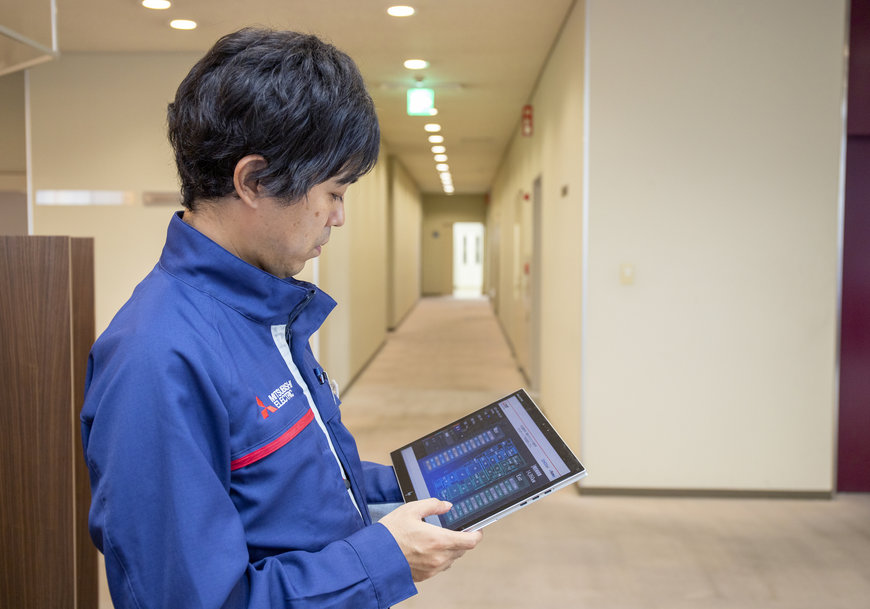
The remote access provided by GENESIS64™ helped the team to quickly shift to remote working when the pandemic struck.
“If we access a desktop PC remotely, only one person can access the system at a time, but with the web-browser based GENESIS64™ it allows multiple people to view data simultaneously.,” says Ryohei Kitada. “So I am now able to teach or give instructions to the junior staff remotely as we look together at the same data.”
“Abundant examples of GENESIS64™ installations show it is capable of monitoring not only production lines but also utilities and infrastructure equipment in factories.,” says Ikuto Matsuyuki from the Software Section, Sales Department, Nagoya Works, Mitsubishi Electric Corporation. “In this case, we were able to prove the capabilities of GENESIS64™ ourselves by building up a system that made the most of its strengths, such as integrated monitoring and the analysis of data from a variety of systems and equipment, as well as its flexibility in remote access.
Ikuto Matsuyuki continued, “Going forward, we want GENESIS64™ to be able to monitor energy consumption data in even smaller time intervals and expand the scope of the systems and equipment it can monitor, like how much energy is being used for air-conditioning and lighting. Our goal is to make it into an industrial manufacturing solution for those seeking to achieve carbon neutrality.”
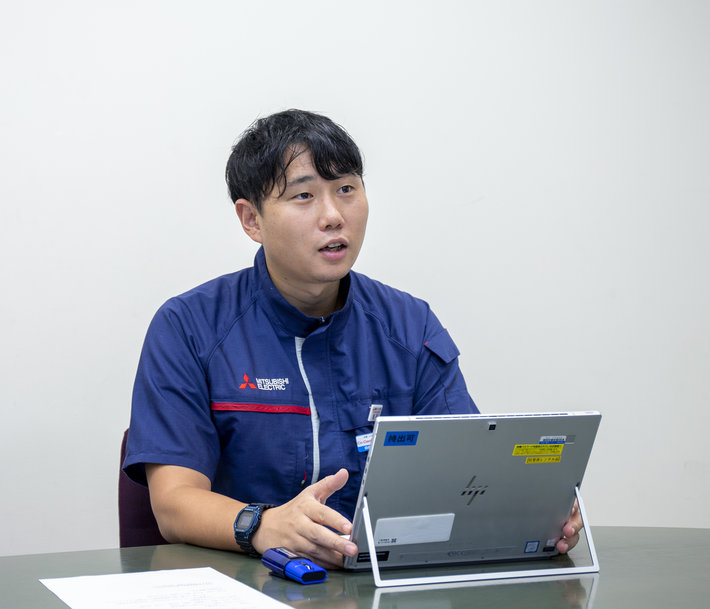
“We were able to prove the capabilities of GENESIS64™ ourselves by building up a system that made the most of its strengths.,” explained Ikuto Matsuyuki of the Software Section, Sales Department, Nagoya Works, Mitsubishi Electric Corporation
https://emea.mitsubishielectric.com/fa/products/hmi/iconics
Or visit our booth at the sps, hall 6, booth 6-248
The image(s) distributed with this press release are for Editorial use only and are subject to copyright. The image(s) may only be used to accompany the press release mentioned here, no other use is permitted.
-/END/-

